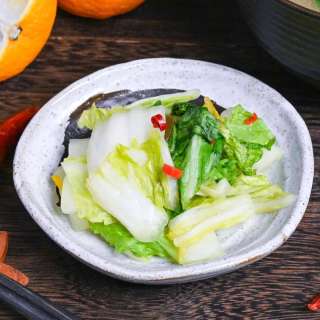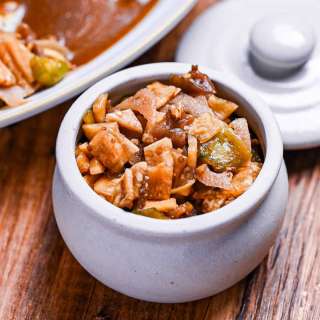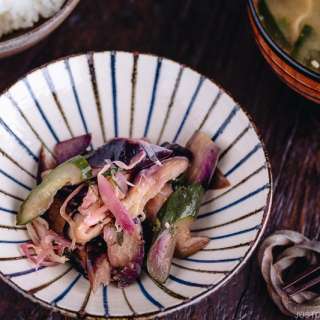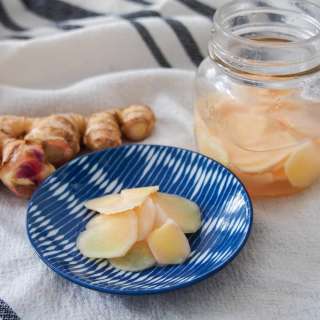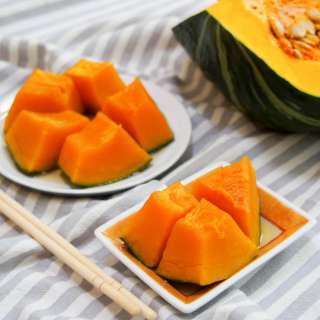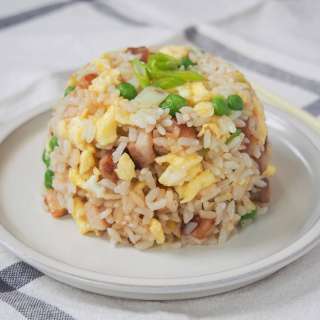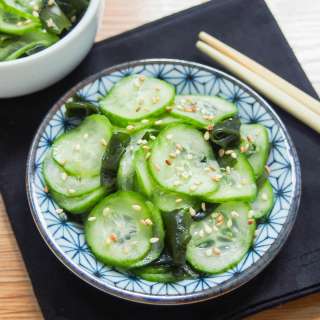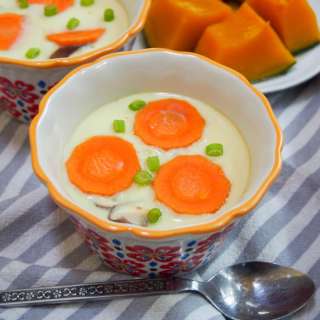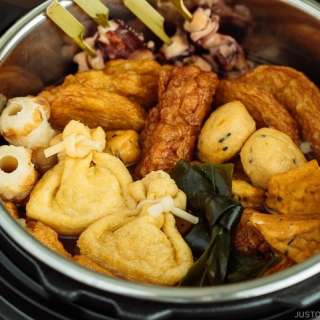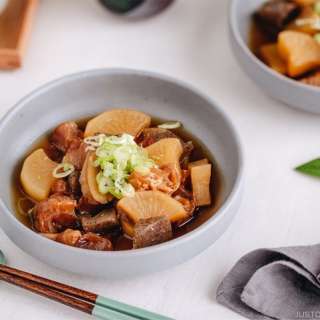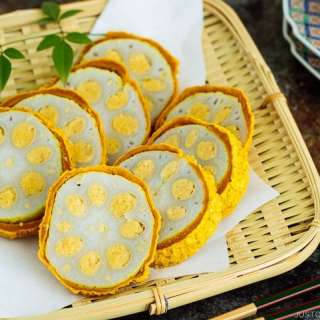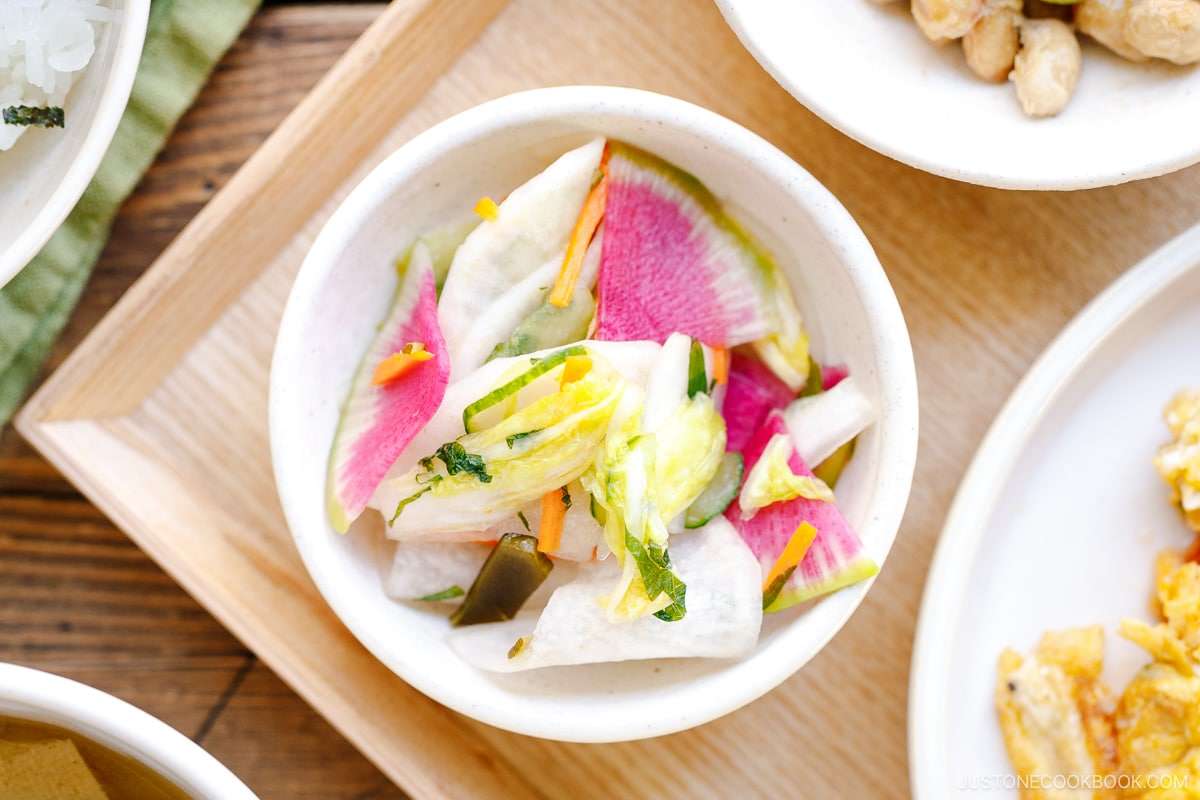
Everyday Japanese Pickles (Asazuke)
User Reviews
0
0 reviews
Unrated

Everyday Japanese Pickles (Asazuke)
Report
Colorful and crunchy vegetables are the star ingredients for my quick, simple Everyday Japanese Pickles. These lightly seasoned asazuke are ready in 1 hour! Take them to the next level by adding shiso leaves, yuzu zest, and sesame oil.
Share:
Ingredients
- 4 leaves Napa cabbage (11 oz, 300 g; or use green cabbage)
- 2 inches daikon radish (6 oz, 170 g; or use turnips or cauliflower)
- 1 Japanese or Persian cucumber (4.5 oz, 128 g)
- ½ watermelon radish (3.5 oz, 100 g; or use red radish)
- ⅓ carrot (1.6 oz, 45 g)
For the Seasoning
- Diamond Crystal kosher salt (2.5% salt; we‘ll calculate the amount of the salt based on the weight of your vegetables)
- ½ tsp sugar
- 1 piece kombu (dried kelp) (1 x 2 inches or 2.5 x 5 cm per piece)
- 5 shiso leaves (perilla/ooba) (optional, but it‘s best to include)
For Serving
- toasted sesame oil (for drizzling)
- toasted white sesame seeds (for sprinkling)
- yuzu zest (optional)
Instructions
- Before You Start: This recipe requires a minimum pickling time of 1 hour (or up to overnight). Gather all the ingredients. Prepare a large bowl. Take note of how much the empty large bowl weighs using a digital kitchen scale so you can measure the weight of the vegetables accurately.
To Prepare the Ingredients
- Cut 4 leaves napa cabbage into 1-inch (2.5-cm) pieces widthwise. Then, cut them into bite-size pieces. Transfer them to the large bowl.
- Peel 1 Japanese or Persian cucumber in a striped pattern. Thinly slice it ⅛ inch (3 mm) thick using a mandoline slicer or sharp knife.
- Peel the skin of 2 inches daikon radish and cut it in half lengthwise. Using a mandoline or sharp knife, thinly slice it ⅛ inch (3 mm) thick.
- Peel the skin of ½ watermelon radish and thinly slice it ⅛ inch (3 mm) thick using a mandoline or sharp knife. You can cut it in half or quarters, depending on your preference. I find it easier to slice a watermelon radish when it is whole or halved. In the photo, you can see I cut it into quarters, but it‘s more work to slice a small piece.
- Peel ⅓ carrot. Using a julienne peeler or knife, cut the carrot into julienned strips. Cut in half or thirds if the strips are long.
- Cut 5 shiso leaves (perilla/ooba) in half widthwise and roll them up to cut into julienned strips.
To Weigh the Ingredients and Season
- Using a digital kitchen scale, measure the total weight of the vegetables (be sure to subtract the bowl‘s weight). Multiply by 2.5% (vegetable weight x 0.025) to calculate how much salt you need. Add this amount of Diamond Crystal kosher salt to the vegetables. Here, my vegetables weighed 512 g, so I added 12.8 g salt (roughly 4 tsp).
- Add ½ tsp sugar to the vegetables. Toast 1 piece kombu (dried kelp) over an open flame to make the kombu tender. Then, cut it into thin strips (I used kitchen shears) and add to the bowl. Finally, add the julienned shiso leaves.
To Massage and Pickle
- Massage the salt into the vegetables with your hands. Then, press the vegetables with some weights. Here, I placed multiple glass bowls on top to press them down. Cover and let them pickle in the fridge for 1–3 hours (at least 1 hour and up to overnight).
- After pickling, remove the weights. Discard the liquid that the vegetables released into the bowl. You do not need to tightly squeeze out the liquid. Transfer to a clean airtight container.
To Serve
- Take out the portion you will serve with a clean utensil. You can enjoy these pickles as is or add the mix-in ingredients of your choice. Our family loves to add yuzu zest, toasted sesame oil, and toasted white sesame seeds. Gently mix together and serve immediately.
To Store
- Keep the pickles in an airtight container and store them in the refrigerator for up to 3–4 days. Always use a clean utensil to remove the pickles from the container.
Equipments used:
Nutrition Information
Show Details
Calories
18kcal
(1%)
Carbohydrates
4g
(1%)
Protein
1g
(2%)
Fat
0.1g
(0%)
Saturated Fat
0.03g
(0%)
Polyunsaturated Fat
0.1g
Monounsaturated Fat
0.02g
Sodium
301mg
(13%)
Potassium
212mg
(6%)
Fiber
1g
(4%)
Sugar
2g
(4%)
Vitamin A
1077IU
(22%)
Vitamin C
17mg
(19%)
Calcium
43mg
(4%)
Iron
0.3mg
(2%)
Nutrition Facts
Serving: 8(as
Amount Per Serving
Calories 18 kcal
% Daily Value*
| Calories | 18kcal | 1% |
| Carbohydrates | 4g | 1% |
| Protein | 1g | 2% |
| Fat | 0.1g | 0% |
| Saturated Fat | 0.03g | 0% |
| Polyunsaturated Fat | 0.1g | 1% |
| Monounsaturated Fat | 0.02g | 0% |
| Sodium | 301mg | 13% |
| Potassium | 212mg | 5% |
| Fiber | 1g | 4% |
| Sugar | 2g | 4% |
| Vitamin A | 1077IU | 22% |
| Vitamin C | 17mg | 19% |
| Calcium | 43mg | 4% |
| Iron | 0.3mg | 2% |
* Percent Daily Values are based on a 2,000 calorie diet.
Genuine Reviews
User Reviews
Overall Rating
0
0 reviews
Unrated
Other Recipes
